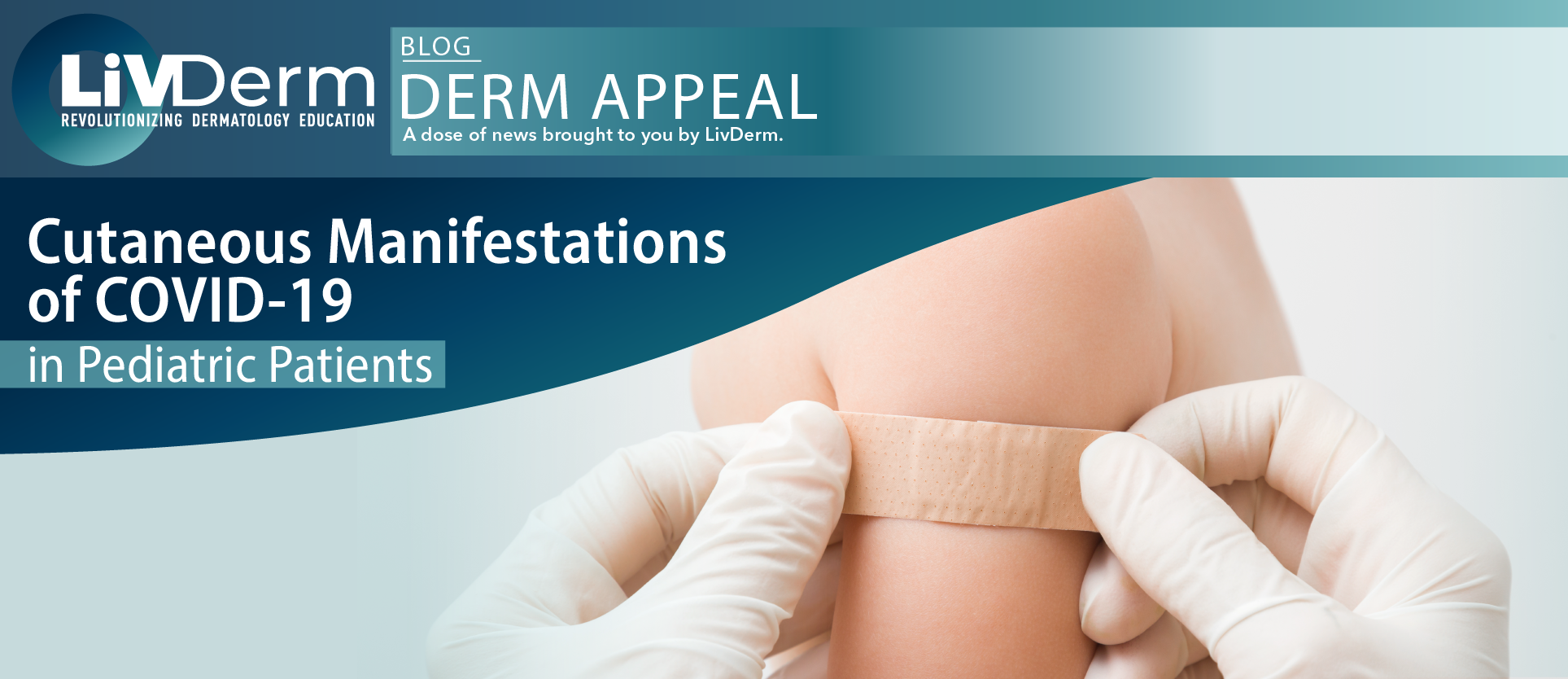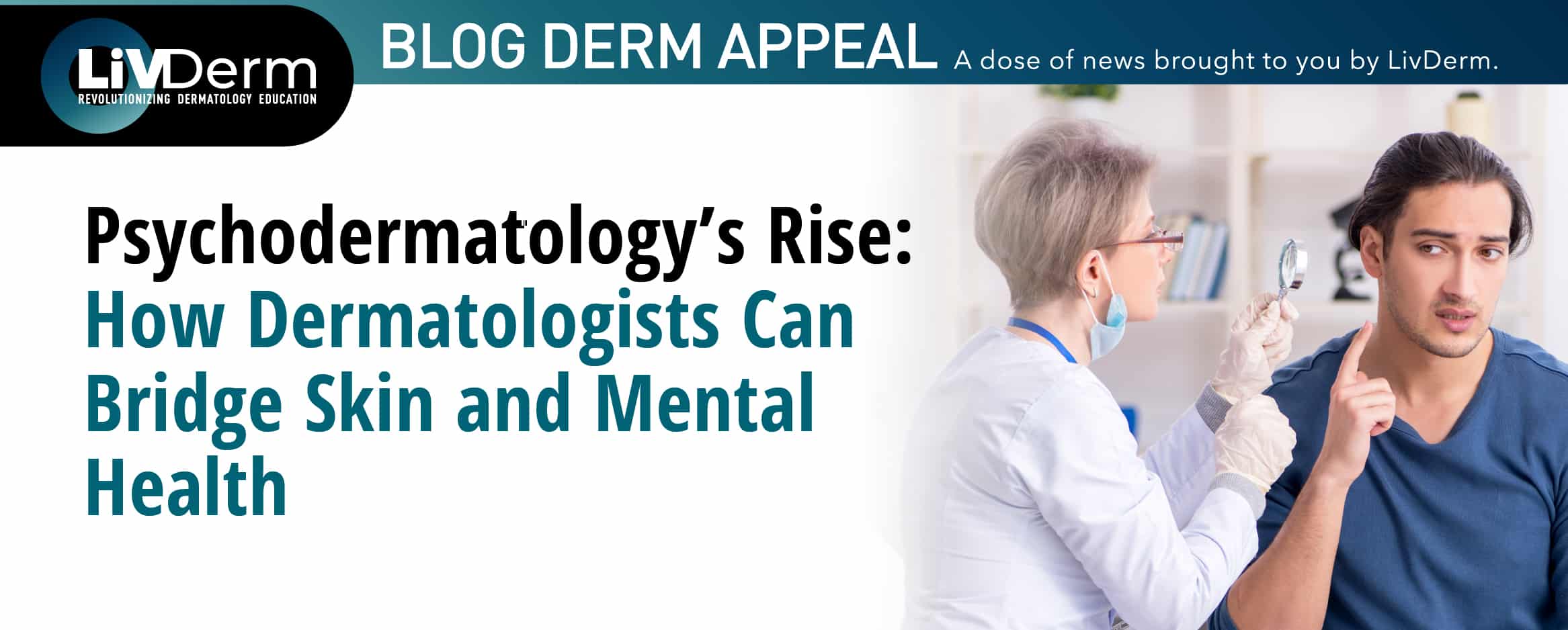At the beginning of the COVID-19 pandemic, dermatological symptoms of the disease were rarely reported until dermatologists became involved in the triage of patients thereby revealing a wide spectrum of cutaneous symptoms, such as urticaria, mottling, and purpura. These were initially reported in adult patients as children infected with COVID-19 tended to be asymptomatic or ogliosymptomatic leaving many cases overlooked and contributing to further spreading of disease. Increasingly, scientific evidence is uncovering the prevalence of skin manifestations in children who present with mild symptoms or those who are asymptomatic, which may ultimately help identify those “silently” infected.
While previous research has estimated that dermatologic symptoms appear in between 0.25% and 3% of pediatric patients, the majority of review articles has focused on adults and only a few pediatric cases have been evaluated. As COVID-19 infection clinically presents in different forms based on patient age, researchers have continued to expand the body of knowledge concerning development of dermatologic changes in infected individuals. According to findings published in Dermatologic Therapy, several cutaneous manifestations of the virus can present in pediatric patients, commonly including acute urticaria, generalized maculopapular lesions, eyelid dermatitis, and varicelliform lesions.
Examining Dermatologic Symptoms in Pediatric Patients
A team of Iranian researchers evaluated the cutaneous and histopathological manifestations of COVID-19 in pediatric patients in a series of articles, case series and reports. To identify relevant literature, the study’s authors searched published articles in PubMed database for keywords of children or pediatric, and cutaneous, dermatology, or skin, and COVID-19, SARS-CoV-2, or Coronavirus disease 2019. The review included articles published between December of 2019 and September 2020. Overall, the retrospective study utilized data from 38 articles comprising a cohort of 353 pediatric patients with COVID-19; the majority of participants were boys (59.4%), between 11-17 years of age, and were either asymptomatic or had few general symptoms.
Specifics of Cutaneous Manifestations
The study’s authors reported that the most common skin manifestations observed in pediatric COVID-19 patients were: “chilblain-like (pseudo-chilblain), EM-like, dactylitis, acral erythema, acute urticaria, livedo reticularis, mottling, acro-ischemia, generalized maculopapular lesions, eyelid dermatitis, milaria-like, varicelliform lesions, rash with petechiae and purpura.” Most dermatologic symptoms present in healthy children without general symptoms or in those with mild respiratory or gastrointestinal symptoms. Additionally, in most of these cases, RT-PCR or serological tests were negative.
In patients with symptomatic disease, the latency time from the appearance of general symptoms to cutaneous presentations ranged from 1 day to a few weeks. General COVID-19 symptoms appeared after dermatologic changes in the case of 3 patients and simultaneously in 2 patients. Skin lesions reported in the articles improved over the course of 3 to 88 days without sequelae, spontaneously or with either topical or systemic corticosteroid treatment.
Kawasaki-Like Disease
Concurrently with the spread of the novel coronavirus, there has been a sudden uptick in the prevalence of Kawasaki-like disease (referred to as Kawa-COVID-19) which can lead to shock syndrome, macrophage activation syndrome, and multi-system inflammatory syndrome in children. The research team reported that Kawa-COVID-19 patients presented more commonly with cardiogenic shock, neurological symptoms, lymphocytopenia, and thrombocytopenia as compared with classic Kawasaki disease cases. Furthermore, more cases were resistant to first-line treatments and required additional treatments including systemic corticosteroids, biological therapy, or additional doses of initial IVIG treatment.
Key Takeaways
COVID-19 infection in pediatric patients has several cutaneous manifestations but most commonly presents as urticaria, maculopapular lesions, eyelid dermatitis, and varicelliform lesions. Despite its limitations – including a relatively small sample size, retrospective design, and the lack of a non-COVID-19 control group – the study adds to the continuously growing body of evidence describing cutaneous symptoms of the virus as it mutates. Additional research efforts are critical to improving our evolving understanding of the disease and inform the development of effective treatment methods at all stages of the infection.
















